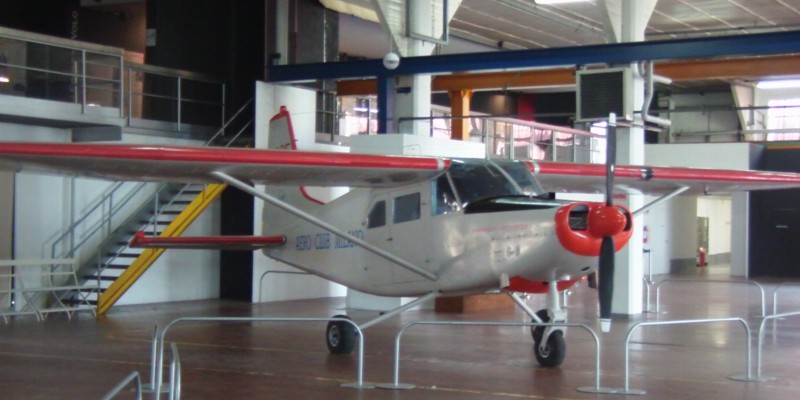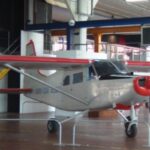The Aermacchi AL-60 was a light civil utility aircraft of the late 1950s and early 1960s. Originally designed by Al Mooney of Lockheed in the United States. After the company decided
not to build the aircraft in the US, it was manufactured in small quantities in Mexico (40 units) and a few were assembled in Argentina (12 units), and under license by Aermacchi and Atlas Aircraft Corporation. Lockheed flew only two prototypes of the AL-60 in 1959 using the designation L-402, before deciding that it would be unprofitable in the US marketplace. lnstead, the company chose to manufacture it under a joint venture in Mexico as Lockheed-Azcarate (LASA) with the designation LASA-60. In ltaly, Aermacchi purchased a license to produce the type, first in its originai configuration as the AL-60-B “Santa Maria” (85 units), then in a modified version for various African customers as the AL-60-C, equipped with the more powerful engine Lycoming GS0-480-B1 (340 HP). Moreover this latter version changed from the original tricycle undercarriage to a tail-dragger arrangement. The AL-60-C version was built under license by Atlas Aircraft Corporation in South Africa. This aircraft was designated the Atlas C-4-M and known as the Kudu. Over 40 aircraft were built and served the South African Air Force between 1974 and 1991. A number of C-4-M Kudu aircraft are still flying privately and have proven well in the role of skydive release aircraft. There is currently a project underway to re-engine the Kudu with turbine engines. This design is known as the Atlas Angel or Turbine Kudu. In 1968 Aermacchi sold the rights to the aircraft to Northwest lndustries of Edmonton, Alberta, Canada and the design was developed into the Northwest Ranger with development continuing until 1972. The ultimate variant of the AL-60 could be considered the AM-3. It was the result of a joint venture between Aermacchi and Aerfer in response to an ltalian Army requirement for an aircraft to replace the Cessna L-19, and was initially designated the MB-33S. The AM-3 used the wing design of the Aermacchi AL-60 utility aircraft, strengthened to incorporate two hardpoints. The fuselage was a new design. The first prototype, constructed by Aermacchi, flew on 12 May 1967, and it was displayed at the Paris air show in June that year. The second prototype, constructed by AERFER, flew on 22 August 1968. but the aircraft lost the ltalian Army contract to the SIAI Marchetti SM-1019. The third prototype used a more powerful engine Piaggio-Lycoming GS0-480-B1B6 (360 HP) and this variant was designateci AM-3C. In September 1970 the South African Air Force ordered 40 AM-3C’s, designating the aircraft the AM-3CM Bosbok (Bush-buck). The initial eight aircrafts were manufactured in ltaly, while the remaining 32 were assembled at Atlas. The first aircraft was taken on charge in March 1973, and the type equipped two SMF Squadrons until 1992. The Bertolina Family presented to the Museum in 2012 the aircraft on display.
Thanks to Bertolina Family and Maurizio Maroni.




